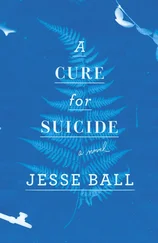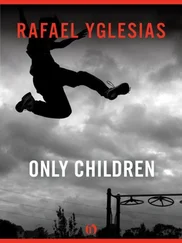Gene drew this picture of his childhood: during the week he spent most of his free time with Daddy, on the carpentry jobs or in the park or at home; when he lost his father, it was not to the mother, but to photography. That distinction was clearly defined in Gene’s mind from the beginning and continued to this day. He was allowed on the carpentry jobs before he could walk; as an adolescent, he was still forbidden from his father’s darkroom. The reasons given masked the real meaning of the distinction for Gene, reasons he couldn’t argue with, namely the dangerous chemicals, the lack of space, the fact that darkness had to be maintained. His father was unwilling to allow Gene to play with his expensive camera or his lenses and Gene didn’t care for substitutes, such as a Polaroid they gave him for his sixth birthday. It was far easier to let him hammer a nail into a spare piece of wood than allow him to waste a roll of film. And, in my mind, there was also the possibility that Gene simply hadn’t inherited a feeling for photography. This last consideration is heresy to most psychological theories. Gene’s lack of interest in photography has to be emotional, a rejection based on psychodynamics, rather than a matter of personal taste. I was unwilling to make that assumption. After all, the untouchable cameras, the forbidden darkroom, the unsuccessful rivalry for his father’s attention when it came to photography, could just as easily produce a profound affinity for it, rather than indifference. My instincts told me that Gene merely happened to prefer carpentry to photography. There are natural gaps between people: that a gulf isn’t self-manufactured doesn’t make it any less potent for the psyche. Indeed, it might be more painful to feel an incapacity for something that is so beloved by the beloved.
I didn’t make an effort to uncover this conflict for weeks, allowing Gene to paint as complete a “neurotic” picture of his life as he liked. I began to probe only when he completed his distorted canvas. (His condition didn’t seem urgent: after two sessions, Gene reported his anxiety attacks had diminished and he finished the English and science projects, late, but soon enough to get “passes” from his teachers for the first term.) It was a month into the therapy before I asked a provocative question. Did Gene remember the first time he was forbidden to enter the darkroom?
There was the usual denial, typical not only of Gene, but most patients. He said he had no memory of the first time. Therapy’s conjuring trick — it never fails to amaze me — happened a session later. Gene came in with a clear recollection from age four, not of his father barring the darkroom’s door, but his mother. Evidently he had wandered in and she found him opening a toxic fluid. From then on she insisted his father lock the darkroom at all times.
“Mom always worries about me being safe,” he commented and continued with a long diversion about her overprotectiveness in general. Gene portrayed her as a cartoon of fearful motherhood. But none of his anecdotes showed her to be excessive or unusually nervous, except with respect to the father’s photographic equipment. I didn’t confront this illusion right away. I disagreed with Susan’s impatient methods, in spite of their success with me. Gene wasn’t a suicide lying in a ward. I agreed with Freud: Gene needed to unearth his feelings with his own hands. I asked repeatedly about these early memories: his mother’s injunctions against the darkroom; her shrieks if he touched one of his father’s cameras; her insistence that Gene not accompany his father when he went out to take photographs. I allowed Gene to walk past the truth blindly over and over and instead explain Carol’s guarding of his father’s art as overprotectiveness of Gene. This was obviously false. She made no objections to Gene using saws, hammers, drills and the like, all potentially dangerous. She allowed Gene to swim in rough surf when they visited friends at the beach, to take the subway to school alone at age nine, and many other minor freedoms that a neurotic mother would not permit — or a normal but careful mother, for that matter. Gene, however, could recite those contradictory facts and continue to insist his mother’s sole concern in making rules against entering the darkroom or touching the photographic equipment was to protect him.
“How about today?” I finally asked him. “Do you think your mother is still worried you’ll accidentally poison yourself?”
Gene was silent. He pushed his lips in and out — a persistent manifestation of resistance.
I waited. I trusted that Gene’s desire to please, or perhaps to get well, would eventually overcome these quiet rebellions. He was silent for a long time and then said, “What did you ask? I forgot.”
I repeated the question exactly.
He snorted, “No.” Then he mumbled, “Well … She’s worried I’ll mess something up and Dad’ll get angry.”
“What would happen if your father got angry?”
“What!” he said. Symptoms of alarm appeared: his right leg rose up, his head twisted to look in my direction, the expressive eyebrows lowered, his voice cracked. In our sessions so far, there had been no mention of anger from his father. I made a note of it, remembering Carol’s fear of her husband’s reaction to learning of the therapy. Until then I had assumed Carol barred Gene from contact with the photographer-husband out of rivalry, her own unresolved Oedipal conflict, since she wasn’t permitted in the darkroom either, or invited on picture-taking walks. Why should Gene be allowed to share in what she was denied? Maybe that was wrong. Maybe she was afraid that if Gene entered the forbidden darkroom, the father would hurt Gene. It could be she was shielding Gene from encountering a man she genuinely feared, preserving the fiction of the benign carpenter working in the light of day and banishing the dangerous artist to his lair.
“What would happen if your father got angry at you?” I asked again.
Gene remained frozen in his startled pose, hardly breathing.
“What’s your father’s name?” I asked. My instinct was: let’s make him a man. Let’s bring him into the room as a person, not an archetype.
[I was green when I treated Gene, making mistakes left and right. The above, however, is a foreshadowing of my later methods. How can we ask a patient to look realistically at his own life if we only mirror the distorted images of his neurosis? Susan was right to abandon the dogma of uncritical listening, although I think she was sometimes too quick to intervene. There’s a middle ground, a way of being neither a mirror nor a cop, but a signpost pointing to a new direction when the patient can see only the well-worn dead end.]
“Uh …” Gene’s right leg dropped. “Um …” He let out an embarrassed laugh. “I can’t think of anything but Daddy.”
“You can’t think of your father’s name?” I said gently.
“It’s crazy,” Gene said, wonderingly, impressed.
I made a note of this, learning something for myself, as well as about him. It may seem trivial to the reader, but I was struck by how this simple technique helped make Gene aware of his own awe, the mythic quality of his father.
Gene slapped the couch and the name came out: “Don. His name is Don.”
“People call him Don or Donny?”
“Donny?” Gene was amused. “No.”
“Don,” I said in a deep voice, giving the name grandeur and power.
Gene laughed again. “Yeah, right.”
“So what happens when Don gets angry?”
“Huh?” His leg went up again and he twisted his head. I waited. “Well, he gets angry,” Gene said, annoyed.
“Does he yell?”
“Of course he yells.” Then silence.
“Does he curse?”
Читать дальше












